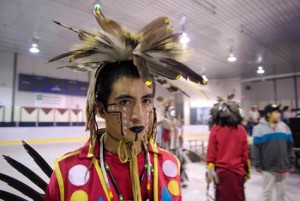TORONTO – imagineNATIVE Features six NFB Short Films.
Indigenous roots, identity and representation are at the heart of six National Film Board of Canada (NFB) short films―directed by a mix of new filmmakers and some of Canada’s most acclaimed artists―screening at the 16th Annual imagineNATIVE Film + Media Arts Festival in Toronto from October 14 to 18, 2015.
When Inuit filmmaker Bonnie Ammaaq was a little girl, she and her family moved from the government-manufactured community of Igloolik to Baffin Island, where for 11 years their home was a vast, wild and beautiful territory that lay outside their door. Her short documentary Nowhere Land is an elegy for a way of life that exists now only in the few still living who experienced it.
In Red Path, Atikamekw filmmaker Thérèse Ottawa offers an intimate look at the moving journey of Tony Chachai, a young Atikamekw man. His road to redemption—which begins with a promise to his dying mother—leads to a return to his roots and the passing on of his community’s cultural practices.
The festival is also featuring the four short films produced for the NFB’s Souvenir Series, exploring Aboriginal identity and representation and created entirely from outtakes of more than 700 NFB films. Presented as part of the Opening Night Gala, Jeff Barnaby’s Etlinisigu’niet (Bleed Down) destroys any remaining shreds of the mythology of a fair and just Canada. Caroline Monnet’s Mobilize navigates the tension between the traditional and the modern experienced by a people moving ever forward. Michelle Latimer’s Nimmikaage (She Dances for People) deconstructs the layers beneath the recorded pageantry of Canadian nationalism. Kent Monkman’s Sisters & Brothers draws parallels between the annihilation of the bison and the devastation inflicted by the residential school system.


Comments are closed.